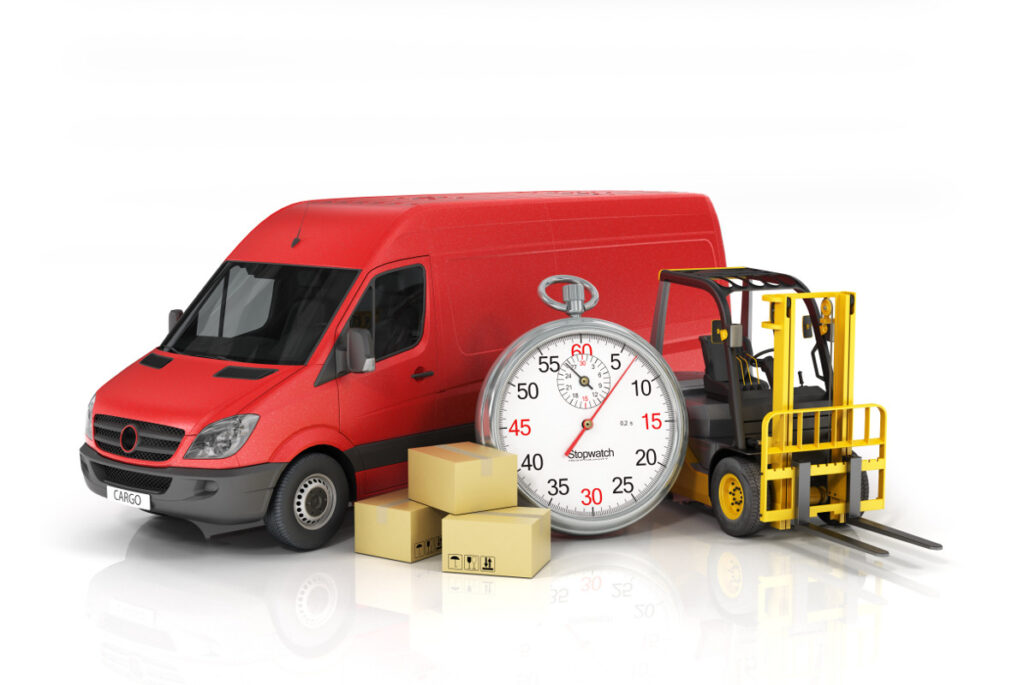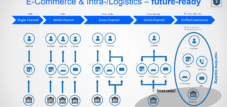Hardly ordered, already at the door
Bought yesterday - delivered tomorrow: Not long ago, the delivery of an ordered product within 48 hours was a quality feature that enabled online retailers to position themselves over their competitors. But since next-day delivery has become the talk of the town and the first providers are delivering on the same day, extremely short delivery times have not only become normal for many customers, but are explicitly required.
Until now, there were natural limits to the delivery time, which could only be pushed further with a lot of technical effort. In addition to setting up a comprehensive network of decentralized storage locations and expanding transport fleets, predictive logistics is a main approach to optimization.
The development of predictive shipping is once again being driven by e-commerce pioneer Amazon . This is hardly surprising, given the company's virtually endless data trove; every product view, every page visited, and every click on one of Amazon's websites is recorded. This information feeds the algorithms used to infer the probability of a potential buyer from longer dwell times or repeated page visits. The analysis method continuously learns from the newly acquired data, thus steadily improving the accuracy of its predictions. Once a certain level of accuracy is reached, it makes perfect sense for Amazon to prioritize downstream logistics processes such as order picking, picking, and shipping preparation. When the customer finally clicks the "Buy" button, the package is already prepared and only needs to be labeled before being dispatched.
But the technology patented by Amazon goes a step further, moving beyond individual orders and using probability calculations to target entire customer groups. This allows for assumptions about the purchasing behavior of entire regions. For example, consider a sporting event in a city. A week beforehand, preparations for shipping jerseys for the participating teams would begin in a nearby warehouse. The packages would then be labeled with address stickers already indicating the recipient's city or postal code area. The items would then be transported there and, if necessary, stored in the truck or a decentralized buffer warehouse until the predicted orders actually arrive. All that follows is the completion of the shipping label. Then the truck sets off and delivers the desired jersey shortly after the order is received.
Predictive warehouse logistics
Whether in a central warehouse or a local buffer warehouse, the prerequisite for fast shipping is the smooth picking of items. High-performance logistics solutions are needed here if the time advantage gained is not to be lost through delayed delivery. And this is precisely where smaller e-commerce retailers have the opportunity to position themselves in terms of speed against the Seattle giant.
Here, too, the process is managed proactively. For example, the control software assigns follow-up orders based on the work plans allocated to the transport systems or order pickers, if these are located near the storage location of an additional item to be picked. Other selection criteria could include onboard position sensors such as RFID chips or GPS devices. With autonomous robots, anticipatory control works by allowing the devices to communicate autonomously with each other and decide, based on their current positions or planned routes, which module is best suited to pick up the item.
But whether software-controlled or operating autonomously, predictive planning helps to efficiently coordinate the routes traveled within the warehouse. Where not so long ago items were stored in conventional rack warehouses, from where they were manually retrieved and transported long distances for shipping or production, warehouse processes in many companies now run completely automatically and in parallel.
This automated logistics requires compact storage units that can be placed close to the picking stations and offer high throughput. Vertical buffer storage systems could be a solution here due to their small dimensions and high picking performance.
Transport to the customer
But what good are all the algorithms, decentralized warehouses, and fastest order picking if the packages get stuck in traffic on their way to the customer? Here, too, technology in the form of big data comes to the rescue: traffic flows are continuously monitored, and drivers are always shown the optimal route. Researchers at the Hasso Plattner Institute . They recently developed a system that links internal information with publicly available, traffic-related data in real time. This solution allows logistics companies to obtain precise forecasts of traffic flow. The system combines and analyzes the latest information from the user's own freight fleets with current traffic data. In this way, they immediately know if, where, and for how long one of their trucks has been stuck in traffic and to what extent this is delaying delivery.
But the system can do even more, enabling it to predict traffic disruptions before they actually occur. For example, if GPS data indicates an increasing number of vehicles on a highway, this can signal impending congestion. Similarly, information about weather conditions can be used to predict ferry or plane departure times. This information allows planned routes to be optimized in advance, ensuring that customers receive their goods almost immediately after ordering them online.
As an alternative, the US web giant might again be an option, as it plans to serve the market directly from the air with its delivery drones, at least in the medium term. From the company's perspective, this is certainly a good opportunity to optimize its Prime Now service using drone deliveries. Traffic jams, congested roads, or a lack of parking for delivery vehicles: none of these would stand in the way of fast delivery.
Company managers are already calling for dedicated air corridors for unmanned aerial vehicles. This would allow delivery drones to operate at altitudes between 60 and 120 meters, where they wouldn't disrupt air traffic. Technically, transporting goods by drone without major issues. The devices are already being tested, including in Canada. The necessary regulatory approvals are currently the main obstacle. But once these are cleared, Prime Air Amazon, has an answer to that.


